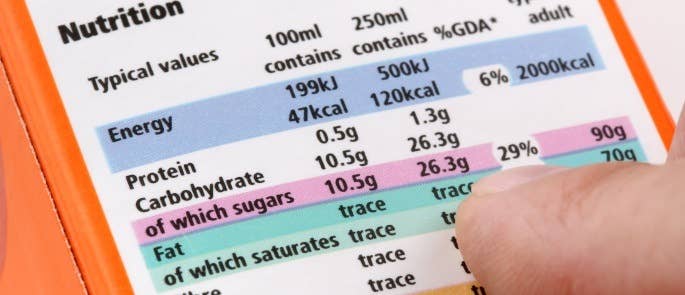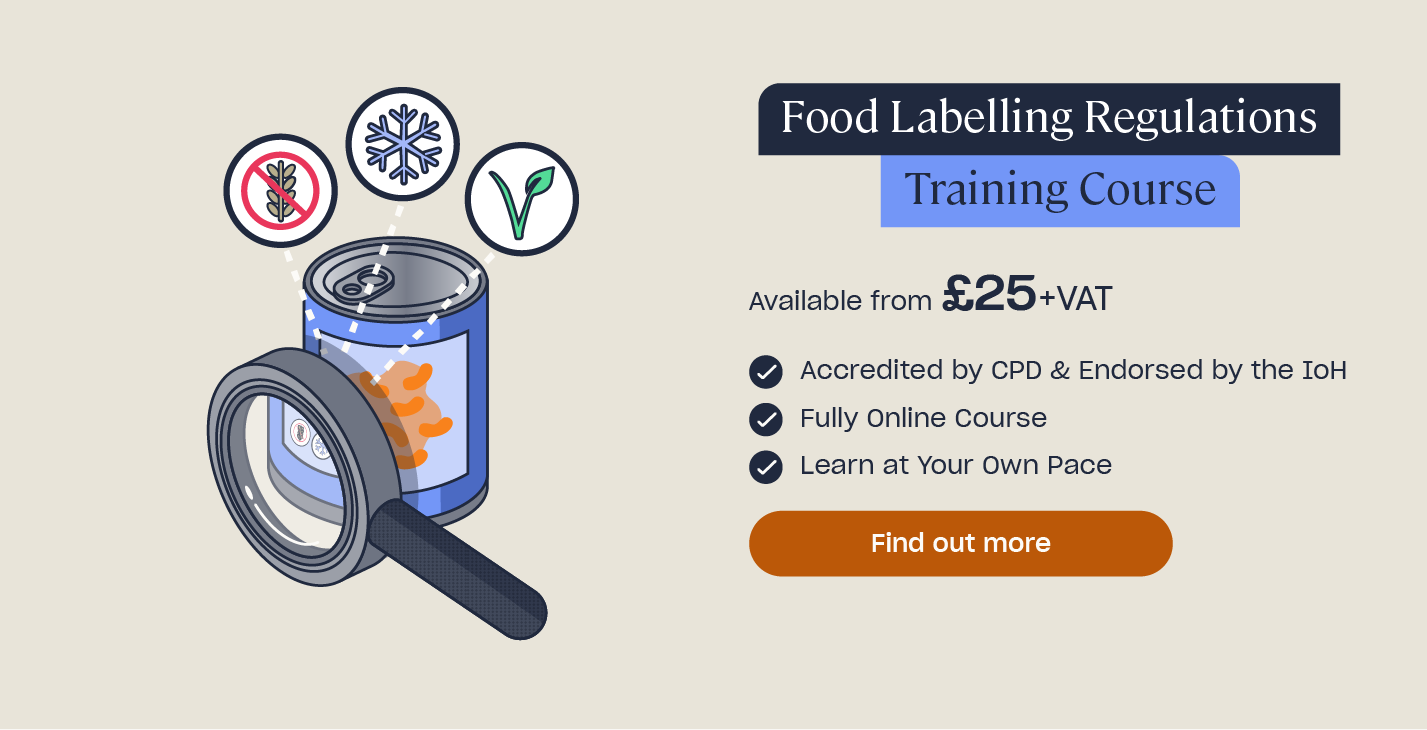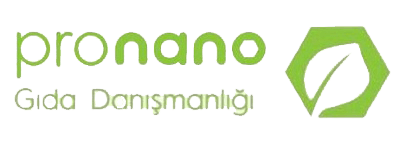Food labels are essential. In addition to being a legal requirement for food producers, it also aids consumers in making wise food purchases and enables them to safely store and use the food they have purchased,
The needs are the same whether you supply stores like supermarkets or eateries. Therefore, it’s critical that you comprehend your duties and the significance of food packaging.

Table of Contents
What are the Legal Requirements for Packaging Food ( food labels )?
The food labels As a food manufacturer, you are required by law to accurately label each and every one of your products. If you don’t do this, there can be severe consequences. If the authorities find that you are not in compliance, they will send you an improvement notice that details your violations, the regulations you must follow to comply, and what you must do to comply and by when.
You can continue producing after obtaining an improvement notice, but you must adhere to all guidelines to bring your business into compliance within the given time frame. If you choose to ignore a notice of improvement and continue to be in violation after the deadline, you will be in violation of the law and may face legal action.
Your pre-packaged food must include the following on its Food labels:
- The name of the food. This must be a true representation of your product and must not be false or misleading.
- A list of ingredients. You must use ‘Ingredients’ as the heading and list the ingredients used to make the product in descending order of weight.
- The percentage of certain ingredients. If you emphasize a certain ingredient on the packaging of your product, such as ‘Chicken Burgers’ you must state the quantity of this ingredient as a percentage in the ingredient list. For example chicken (75%). This is also a requirement if you highlight the ingredient with a picture or graphic, such as a cartoon strawberry on the packaging of yogurt, or if it is necessary to distinguish the product.
- Any instructions for use, such as cooking instructions if they are needed. This includes the cooking equipment, temperature, cooking time, and any other specific instructions needed to prepare the food.
- ‘Use by’ or ‘best before’ dates. By putting these dates on your products, you will help customers store and use your food safely, as well as reduce food waste.
- Storage instructions. These instructions help your consumers safely store products before and after opening the packaging, which will ensure they remain safe to consume. For example: ‘Store in a cool, dry place. Once opened, refrigerate and consume within 3 days.’
- Contact details. Include the country of your business, the name of your business, and a contact address.
- Country of origin or provenance. You must not imply your product originates from where it was manufactured if you sourced it from somewhere else. For example, if the tuna used in your product was fished in Canada, shipped to the UK, and produced into a pre-packaged meal, you cannot say it is British tuna. For more information on the legal requirements for food packaging that have contact Nanopro Group.at our

Importance of Food Labels:
Food labels are required by law and are significant for a variety of reasons. They enable people to plan when they will eat the food and help consumers make informed decisions about the food they purchase, store, and utilize, all of which reduce food waste.
The importance of label standards and how they influence consumer product choice are both covered in the following paragraphs of this article.
Nutrition/Dietary Advice of Food labels:
Since 2016, it has been a legal requirement for food production companies to display nutritional information on the back of all pre-packaged food. As well as ensuring you fulfill your legal responsibilities, nutritional information can help consumers lead healthier, longer lives.
Customers are more invested than ever before in nutritional information, especially as the number of food-related diseases and health problems is on the rise. Therefore, many people opt for more nutritious alternatives and should be made aware of the nutrition and dietary information of all food items they purchase.
Eating a diet high in saturated fat, salt, and sugar can result in several health problems. These include:
The goal of food labels is to gain customer satisfaction and make him feel confident about eating the product without fearing for his health or exposure to allergies
High Blood Pressure
heavy blood pressure can be caused by a diet that is heavy in salt and saturated fat. Thus, it’s crucial that you indicate the presence of salt and saturated fats in your products to encourage your customers to consume a healthy, balanced diet. This is crucial for anyone with high blood pressure who needs to intentionally avoid specific foods to lower their consumption of salt and fat.
Obesity
Obesity can result from eating a diet high in calories, sweets, and saturated fats and from not exercising enough. There was a 15% increase in obesity cases between 1993 and 2015. Therefore, it is crucial that consumers have the opportunity to track their intake and nutrient values.
:max_bytes(150000):strip_icc()/obesity-signs-symptoms-and-complications-4689168-v1-f9b474a31054404bb2307b221303c9e9.png)
Heart Disease
Heart disease occurs when a person’s arteries are clogged by a build-up of fatty deposits on the artery walls. This can result in a blood clot and, if the blood clots block an artery to the heart, can lead to a heart attack. Heart disease can have serious consequences and an unhealthy diet is directly involved in several of the risk factors.

Other reasons why consumers may require nutrition/dietary information-Food lables include:
- Personal or religious belief. Some people choose not to eat certain products. Therefore, they should be able to easily identify any ingredients they would rather avoid.
- Specific dietary requirements. People might experience uncomfortable or potentially harmful side effects if they consume a product they are intolerant or allergic to.
- Medical conditions. Some medical conditions, such as diabetes, require individuals to know the specific content of certain food components.
Allergens
People with food allergies can suffer potentially serious consequences if they consume foods they are allergic to, so they must be very cautious about the foods they eat. If someone accidentally ingests food they are allergic to, it can cause an allergic reaction and, in some cases, be severe and life-threatening.
Therefore, it’s vital that you are aware of the 14 named allergens and what information you are legally required to include on your food packaging. For more information on allergen labelling requirements, see the EU FIC regulations on food labelling. You should also be aware of Natasha’s Law, which has come about in order to improve allergy labelling.
What is Natasha’s Law?
Natasha’s Law is a new food labelling legislation that is due to come into force in England in 2021, with similar arrangements expected to follow in other nations for a UK-wide approach. It was created following the death of 15 year old Natasha Ednan-Laperouse, who had a fatal allergic reaction to a Pret a Manager baguette that contained sesame seeds. Once Natasha’s Law is enforced, it will require businesses to label food that is pre-packed directly for sale and made on the premises with a full list of ingredients, including allergens.
The Food Standards Agency (FSA) is currently developing guidance on the list of foods to which Natasha’s Law will apply. This is due to be published on the 1st October 2019, giving food businesses a two-year transition period to prepare for these new requirements.
For further guidance you can visit the FSA’s information page. We also offer Food Allergen Awareness Training which will teach you how to comply with the UK’s allergen laws. It is up to date with current allergen legislation in the UK and includes information on Natasha’s Law.
Origin Information
For consumers, indicating where your product is made can be crucial. In order to support their neighborhood farmers and lessen their carbon footprint, many individuals choose local producers.
Many other ethical and political factors might also influence a person’s decision to choose one product over another. One might decide to purchase fair trade, organic, or free-range products, for instance. In order for customers to know where their food comes from, it is crucial that you accurately label the provenance of your produce.
Production
Production details might include information on whether the food labels are :

Many people are invested in how their food is prepared. Whether it be for religious, cultural, or ethical reasons, including information about the production methods of your product can help users make informed decisions about which products they would like to consume.

Nanopro Consulting in the food industry is by your side and a partner in the constant development

